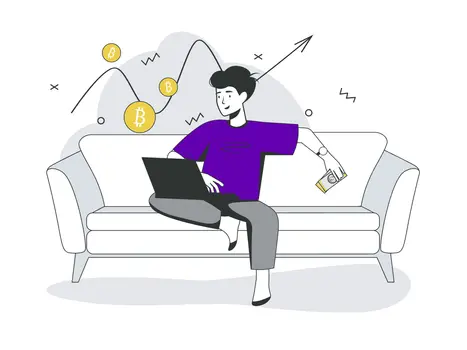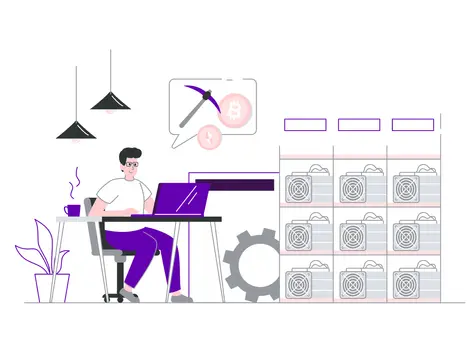What is Arbitrum? A lead to ARB
Arbitrum is a layer 2 solution that makes Ethereum smart contracts faster, more scalable, and private. The ARB token powers the Arbitrum DAO.

Ethereum is a popular decentralized application platform (DApps). In the past few years, there has been a huge increase in the number of people using the network, which has caused transaction fees to go up and caused congestion. Some believe that on-chain tweaks and upgrades are the best way to scale Ethereum, but others are pursuing second-layer solutions.
One solution, Arbitrum, with the native ARB token, has gained popularity due to its novel approach to the problem.
ARB Utility Token
ARB is the utility token native from Arbitrum DAO, which runs with the help of the ARB token. Its' holders will be able to take part in decentralized governance decisions, which, once made, will be carried out automatically on-chain. Depending on what the proposal is, the voting process will take between 21 and 37 days before it can be passed and put into action. The Arbitrum DAO also votes on who will be on the Arbitrum Security Council, which is made up of 12 well-known community members with multiple signatures.
What is Arbitrum?
Arbitrum is a layer 2 solution that is meant to make Ethereum smart contracts better by making them faster and more scalable and by adding more privacy features.
The platform is made to make it easy for developers to run Ethereum Virtual Machine (EVM) contracts and Ethereum transactions that haven't been changed on a second layer, while still taking advantage of Ethereum's great layer 1 security.
It was made to fix some of the problems with current Ethereum-based smart contracts, like their low efficiency and high execution costs, which hurt the Ethereum user experience and often made transactions expensive.
Arbitrum uses a method called "transaction rollups" to record groups of transactions on Ethereum's main chain and then run them on a cheap, scalable layer 2 sidechain while using Ethereum to make sure the results are correct. This process helps Ethereum get rid of most of the problems it has with computation and storage while opening the door to new types of powerful layer 2-based DApps.
Offchain Labs, a development company in New York, is working on the Arbitrum product and a whole set of scaling solutions right now. Offchain Labs co-founders Ed Felten, Steven Goldfeder, and Harry Kalodner are in charge of the project. At Princeton University, Ed is a professor, Steven has a Ph.D., and Harry is working on his Ph.D. All three are experts in blockchain and want to make cryptocurrencies more useful.
Arbitrum Ecosystem Growth
As a layer 2 built on Ethereum, Arbitrum is immediately accessible to people who know how to make transactions on Ethereum and use popular decentralized apps like Uniswap, Sushi, and Aave.
It's also just as easy to build on Arbitrum as it is on Ethereum since developers can use all their usual tools, like Truffle, Hardhat, Remix, etc., to build and deploy on the platform.
Because of this, the number of people using it has grown so quickly that it can only be compared to a meteor. Its ecosystem has also grown quickly. In fact, there are close to 4 million unique Arbitrum addresses, and that number has been growing at an exponential rate since the start of the project. There are now more than 400 Arbitrum DApps, and many of them are part of the DeFi project.
Some of the most used DApps on the platform, like GMX, Uniswap, Treasure, and Camelot, now have more than $100 million in TVL.
According to data from the token terminal, Arbitrum is the 18th most popular blockchain, even though TVL ranks it as the fourth most popular. This is because its 30-day fee revenue is only $3.8 million, compared to Ethereum's $178.4 million.
How does Arbitrum actually work?
A type of technology called an optimistic rollup is what Arbitrum is. It lets Ethereum smart contracts grow by sending messages between smart contracts on the Ethereum main chain and those on the Arbitrum second layer chain. Most of the processing of transactions is done on the second layer, and the results are recorded on the main chain. This makes the system much faster and more efficient.
It's optimistic because any validator can post a rollup block and confirm the validity of other blocks. The term "rollup" is used to describe how public information can be used to reconstruct a full history of the chain from an optimized log of events. The Arbitrum protocol makes sure that code runs correctly (i.e. as intended) as long as any validator is honest. This helps the network resist collusion and other types of attack.
In the future, there will be two more modes for Arbitrum: channels and AnyTrust sidechains.
Like many other blockchains, the Arbitrum chain has nodes that can join or not. Validator nodes are responsible for keeping track of the state of the chain, and full nodes help to group transactions on layer 1. When aggregators send transactions to the layer 1 chain, they get ETH rewards. The rest of the user transaction fees go to other network participants, like validators.
Arbitrum adds a step called "challenge" to roll up blocks. Other validators check if a block is correct and issue a challenge if they think it is wrong. If it turns out that the block was wrong or that a challenge wasn't fair, the validator who lied will lose their stake. This makes sure that validators always play fair or face the consequences.
The platform also has its own virtual machine, called the Arbitrum Virtual Machine, which is a good name for it (AVM). This is where Arbitrum smart contracts run. It is on top of the EthBridge, which is a group of smart contracts that talk to the Arbitrum chain. Smart contracts that work with Ethereum are automatically translated to work on the AVM.
What is special about Arbitrum?
Several networks have promised to fix Ethereum. Polkadot (DOT), Cardano (ADA), and EOS (EOS) are proof-of-stake (PoS) blockchains that aim to tackle Ethereum's scaling difficulties. Arbitrum is one of them and uses a separate layer of the network that uses optimistic Arbitrum rollups to validate smart contracts and reduce the number of transactions on the ETH mainnet.
The Arbitrum network's Ethereum Virtual Machine (EVM) compatibility allows developers to build dApps on the mainnet without learning a new coding language. Other protocols aspire for similar enhancements.
Arbitrum One reduces fees by batch-validating smart contracts and paying validators.
You can buy and sell $ARB coin on digitra.com and earn DGTA tokens as a reward for each trade. Download the app and open your account!



